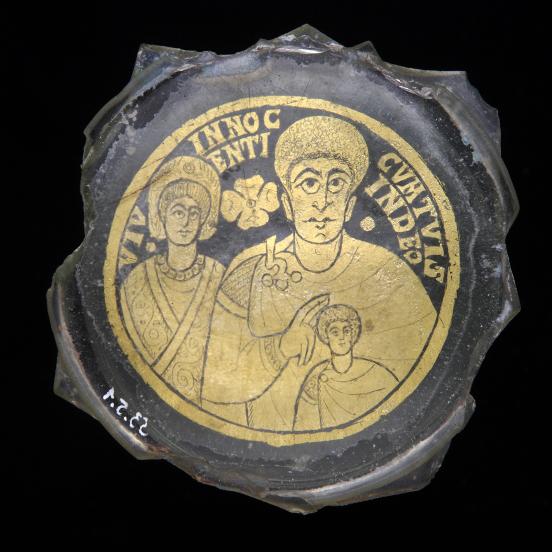Fragment of glass vessel with gold foil decoration, Intercisa
The special so-called fondo d’oro (with “gold base”) glass vessels, which can be mainly dated to the 4th century, were decorated with depictions and inscriptions cut out from thin gold foil by Roman glass-makers. In many cases the gold decoration was placed between two layers of glass at the base of the vessel and then the layers were fused. Thus researchers call them also as ‘sandwich glass’. This round base was often what remained from these glass vessels. Christian representations were ofteny made of the gold foil, but pagan, Jewish and non-religious themes were also depicted. On the piece from Intercisa a family of three members can be seen. To the left there is an affluent woman wearing an embroidered dress and a hairband with gems, while to the right a much more emphatic figure of a man is depicted in a long sleeved tunic and a mantle fastened with a crossbow fibula (a brooch) with onion-shaped knobs. The little boy standing before him is a miniature copy of the father; it is only the shape of his small round fibula that is different from the father’s garment. An early Christian wish occupies the empty space between the family members: VIV(as) INNOCENTI(us) CVM TVIS IN DEO – “May you live, Innocentius, with your relations in God!”


